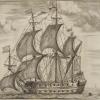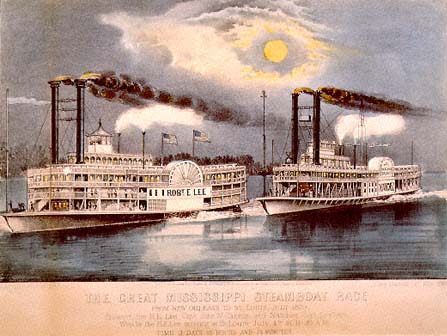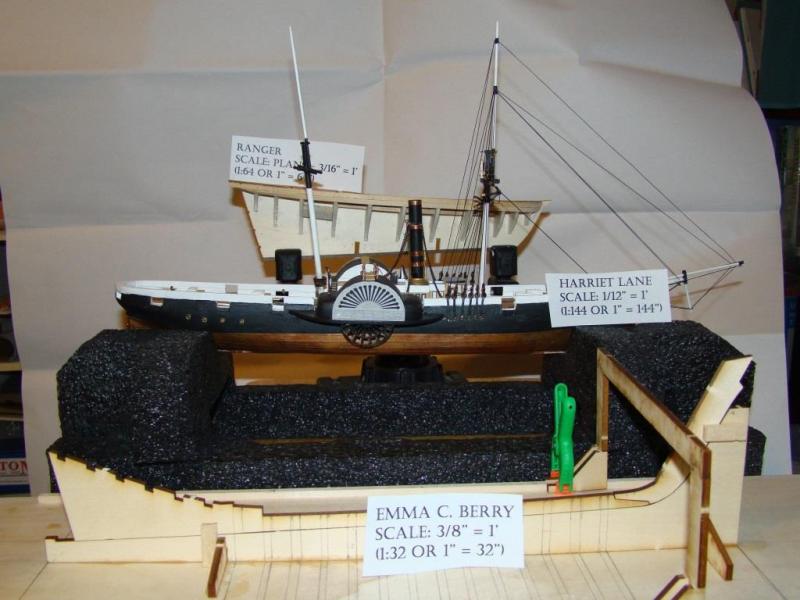-
Posts
3,152 -
Joined
-
Last visited
Content Type
Profiles
Forums
Gallery
Events
Posts posted by trippwj
-
-
As many of you may be aware, the Mystic Seaport Museum is in the midst of a restoration of the Whaling bark Charles W. Morgan. Plans are firming up to re-launch the Morgan on July 21, 2013. The restoration is moving along at a brisk pace. The Shipwirghts Blog currently has a number of photo's showing the hull planking and beginning of copper plate installation. While there are some decidedly modern tools being used, it gives a good idea of the challenge of planking a vessel of this size!
-
Congratulations, Anja! With your charm and good natured personality, the second interview should be a piece of cake!!!!

-
-
Sjors - If you had coppered the hull below the waterline I would say yes, but with just the varnished wood, I would leave them as is. They really standout well against the planking this way!
-
That rudder looks nice - well done!
-
Your saw work is lovely,
the timbers so clean
if I weren't so clumsy
To try this I would lean!
Very nice job, Sherry - thank goodness I have 3 kits to finish before I contemplate moving to the dark side...but I think I'll start more simply with a cross section of some sort!
Very nice job on these pieces with a coping saw!!!!!
-
Woo hooo! Another promotion party! Senior officer on board hosts (looks like that would be Sjors...)
-
Very nice job on the deck!
-
-
Mistah Popeye, sir -
'twas a listening to one of them new fangled CD things tonight with mothah, and thaht I would share with you one of the stories told by Mr. Marshall Dodge. great man, he were. This heah is the story about a day on the watah with his mother in law lobsterin'. I hope, sir, that you enjoy!
http://www.islandportpress.com/BIseteragain.html
-
Very nice looking build thus far!!!
-
There is a photo and brief description of the procedure here http://margaretmuirauthor.blogspot.com/search/label/leaguer
-
-
That one is interesting - it looks familiar for some reason, but not sure why. I would hold off on hints for a while and see what folks come up with!
-
Hello, Sherry, and Good Choice!!! look forward to watching the build - will pull up a seat next to Popeye...

-
Kester - when you click on the picture to enlarge it the name of the ship is the name of the picture.
-
Beautiful work! thanks for sharing this masterpiece!!!! The pictures are such quality as to make it easy to believe this was a full scale vessel rather than a model.
-
Hello, Josh - thought I'd "pop in" about the waterline.
If you intend to paint the boat, the waterline is important for the reason noted above - the area below the waterline would usually be a different color since some type of anti-fouling paint (red on this boat) would be applied below the waterline. Since anti-fouling paint is much more expensive, it was not used for most other areas. On larger vessels, the waterline is also the separating point for copper sheathing.
-
-
LOL!!!! You seem to have slipped into the poetic dimension now, Popeye!
Looking really good - and if only you could barter eyebolts for spinach - just imagine!!!!!
I seem to recall a discussion around the cost of Oreo's and the loss of Hostess when this first came out.....
-
Nice work on the jibboom - I chickened out on drilling the holes and used a seized loop instead.
Are you going to use the brass wire for the chain plates or try something else?
-
-
Takes years of practice to be able to make deductions like that....I move we let maaalso have a "do-over"...
-
Thanks, Keith & Buck. This is one of three I am working on (a little at a time). Doing one solid hull, one POB amd one POF. Here is a comparison of the scales for the 3:
The Harriet Lane was 180 feet in length, the Ranger is based on the William Doughty plans for a 51 ton revenue cutter of about 57 feet on deck, and the Emma C. Berry is about 40 feet between perpendiculars. All are nearly the same size as a model - just the bits and pieces are a lot smaller on the HL than the others!









Introductory Texts on Wooden Ship Building
in Book, Monograph and Magazine reviews and Downloads. Questions and Discussions for Books and Pubs
Posted
So, you are new to wooden ship building and are wondering where to start to learn the terminology, methodology and all that sort of stuff. Don’t feel bad – it is intimidating at times and can seem like a foreign language!
Figuring out where to start to try and understand the ins and outs is a challenge. There are, to be sure, many exceptional books that describe the process of building a model. Some, more than others, relate the process back to the days of old when a shipwright worked as much from intuition and experience as from formal plans and blueprints. To understand how the shipwrights of old built a wooden ship is an interesting (and sometimes confusing) journey. The brief list of references provided below are not intended to cover the total breadth of shipbuilding, but rather to allow you to sample the flavors and textures over a period of about 120 years. There are, to be sure, older references, and there are newer ones, but these will place you in the heart of the most heavily modeled time periods.
The following list of downloadable resources is far from complete – in fact, it is only a beginning. There are so many more! It is also, and for this I apologize up front, nearly exclusively in the English language. You see, I don’t read nor speak anything other than English and some teenagerisms (and a smattering of baby talk), so I really couldn’t say whether a French or Dutch document was describing building a boat or baking a cake, so to avoid leading you too far astray I have steered away from those resources. I do have a few which, if you speak the language, I will gladly share.
So – in no particular order, and for your reading pleasure, here is what I would consider to be the Introduction to Shipbuilding 101 list of readings (all are no longer protected by copyright).
David Steel - The shipwright's vade-mecum (1805)
http://archive.org/details/shipwrightsvade00steegoog
John Fincham - An introductory outline of the practice of ship-building (1825)
http://catalog.hathitrust.org/Record/009723747
John W. Griffiths - Treatise on marine and naval architecture; or, Theory and practice blended in ship building (1854)
http://archive.org/details/treatiseonmarin00grifgoog
----- The ship-builder's manual: and nautical referee (1856)
http://books.google.com/books?id=el9JAAAAYAAJ
------ The Progressive Ship Builder, Volume 1 (1875)
http://books.google.com/books?id=IoJIAAAAYAAJ
------ The progressive ship builder, Volume 2 (1876)
http://books.google.com/books?id=CIJIAAAAYAAJ
Richard Montgomery Van Gaasbeek - A practical course in wooden boat and ship building (1919)
http://books.google.com/books?id=MvsOAAAAYAAJ
Charles G. Davis - The building of a wooden ship (1918)
http://books.google.com/books?id=Zu4OAAAAYAAJ